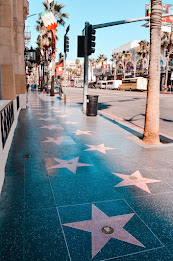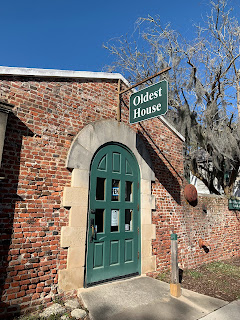Harleigh Peck Digital Archive HON LC
Thursday, April 7, 2022
First Congregation Sons of Israel
Thursday, March 31, 2022
Castillo de San Marcos National Monument
March 31, 2022
St. Augustine, FL
Artifact 1
Artifact 2
Exterior 1
Exterior 2
In Conversation Image 1
In Conversation Image 2
In Conversation Literature
Creative Component
Thursday, March 24, 2022
Lincolnville Museum and Cultural Center
March 24, 2022
St. Augustine, Florida
What used to be the Excelsior High School building is now home to the Lincolnville Museum and Cultural Center located in the historic district of Lincolnville in St. Augustine, Florida. In 1925 Excelsior became St. Johns county's first public high school, in 2005 it became the Excelsior Museum and Cultural Center, and the year 2012 brought about the name it is today. The museum's goal is to share the rich African American history stories through their exhibits and programs held on the historical site. Exhibits such as ways of life, the military, and women who made a difference show the evolution of St. Augustine's black history throughout the past 450 years.
Artifact 1
Artifact 2
Exterior 1
Exterior 2
In Conversation Image 1
In Conversation Image 2
In Conversation Literature
Creative Component
Thursday, March 10, 2022
Lightner Museum
March 10, 2022
St. Augustine, FL
What was known as the Alcazar Hotel built by Henry Flagler is now the Lightner Museum located in the middle of historic St. Augustine, Florida. The inside of the museum houses numerous art and history exhibits that guests can walkthrough. The art and paintings displayed in the Lightener are collections of Otto C. Lightner who bought the Alcazar Hotel in 1947. Otto Lightner turned the hotel into the museum it is today to showcase his collections that visitors come from all over the world to see.
Lightner Museum Website: https://lightnermuseum.org/
Artifact 2
Exterior 1
Exterior 2
In Conversation Image 1
In Conversation Image 2
In Conversation Literature
Creative Component
Friday, February 25, 2022
Tolomato Cemetery
February 24, 2022
St. Augustine, FL
Tolomato Cemetery is a historic landmark in St. Augustine, Florida measuring less than an acre of land. From the 1800s through 1884, about 1,000 bodies were buried under the grounds of the cemetery. Ordinary people, as well as major historically impacting individuals, can be found resting here. People from places and origins all over the world and soldiers who fought in the Civil War are buried here. An important Cuban bishop is also found resting here. This place has undergone many momentous periods such as the First Spanish Period, the British Period, and many more eras that the state of Florida has been through. The special and impactful stories of those who lived before us are recognized and remembered here at the Tolomato Cemetery.
Tolomato Cemetery Website: http://www.tolomatocemetery.com/
Artifact 1
Exterior 1
Exterior 2
In Conversation Image 1
I was reminded of the Arlington National Cemetery pictured above on the right when I saw the markers of the military veterans in the Tolomato Cemetery. In the Arlington National Cemetery, soldiers' markers are organized, polished, and labeled with the soldiers' rank. Just like in Arlington, the tombstones in the Tolomato Cemetery were placed in an organized and clean line, they were all the same white marbled stone, and they were labeled with the rank of the soldier.
Photo Link: https://www.usatoday.com/restricted/?return=https%3A%2F%2Fwww.usatoday.com%2Fin-depth%2Fnews%2Fnation%2F2021%2F05%2F28%2Fphotos-arlington-national-cemetery-flags-in-memorial-day%2F7485347002%2F
In Conversation Literature
Creative Component
Sunday, February 20, 2022
Oldest House Museum Complex
St. Augustine, FL
February 17, 2022
Oldest House Museum Complex Website: https://staughs.com/oldest-house-museum-complex/
Artifact 1
Artifact 2
Exterior 1
Exterior 2
In Conversation Image 1
In Conversation Image 2
In Conversation Literature
Creative Component
Saturday, February 12, 2022
St. Photios Greek Orthodox National Shrine
St. Augustine, FL
February 10, 2022
A part of America's Greek Orthodox Archdiocese, St. Photios chapel is a special institution located off of St. George street. Those of the faith, as well as interested tourists, are welcomed to experience the overwhelming peace that can be felt when walking through those doors. The museum exhibits contain fascinating artifacts and pieces of history. According to the information on the site's website, in 1768 the Greeks arrived in America and the displays inside the shrine illustrate the history behind the beginning of the Greek Orthodox community here in the United States. St. Photios is a piece of history from the meaningful story of the first Greek colony.
St. Photios Greek Orthodox National Shrine Website: https://stphotios.org/about/
Artifact 1
Artifact 2
Exterior 1
Exterior 2
In Conversation Image 1
In Conversation Image 2
In Conversation Literature
One Hundred Love SonnetsI love you directly without problems or pride"
Creative Component
First Congregation Sons of Israel
April 7, 2022 St. Augustine, FL Established in 1923, the First Congregation Sons of Israel Synagogue became home to many people of the Jewis...

-
St. Augustine, FL February 17, 2022 The Oldest House Museum Complex is a special part of St. Augustine's history. The site is run by the...
-
February 24, 2022 St. Augustine, FL Tolomato Cemetery is a historic landmark in St. Augustine, Florida measuring less than an acre of land. ...
-
St. Augustine, FL February 10, 2022 A part of America's Greek Orthodox Archdiocese, St. Photios chapel is a special institution located...
























































